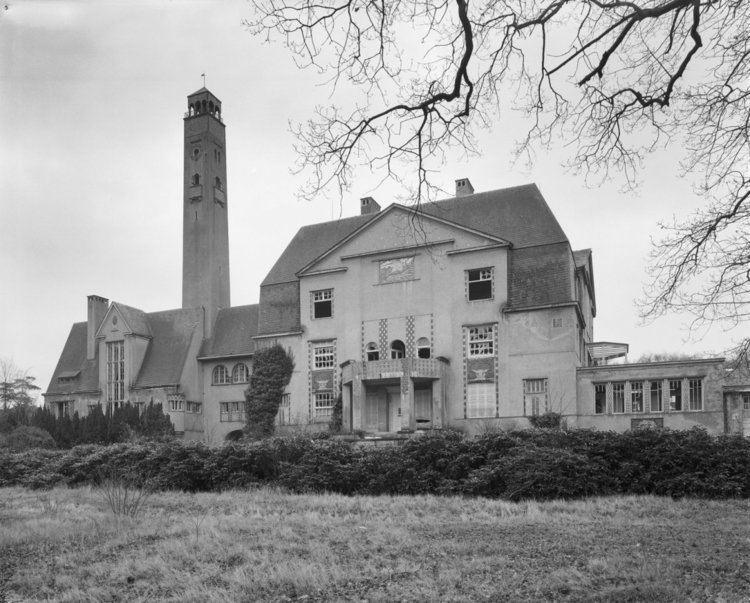 | ||
Kareol (1910-1979) was a huge Art Deco building on the Van Lennepweg in Aerdenhout. It was the largest house being built for a private owner in the Netherlands in the 20th century. It was demolished in 1979.
Contents
History
Kareol had a high water tower that could be seen from the train and was built in 1908 by a German-born Amsterdammer, the banker and chairman of the Wagnervereniging, Julius Carl Bunge. It was situated in a park with a small forest. Kareol was built in 1908 by the young Swedish architect Anders Lundberg. Bunge was a big Richard Wagner fan and there were many tiles in the house with pictures referring to the opera Tristan and Isolde. The whole building was lavishly decorated with tiles by German architect Max Laeuger. The small tempel at the end of one of the park lanes still has a tile design, the last remnant of a whole collection of them that had been used to decorate the house with. Two of them have been reinstalled in the Bloemendaal city hall to commemorate the villa.
During the Second World War the house was used as a sanatorium for wounded soldiers. The Dutch Military Victims Association still has a magazine named the Kareoler. In the 1960's the building was occasionally used for filming locations. Despite local efforts to restore the house, it was demolished in 1979, and an apartment building was built on the same spot. The park grounds have been preserved. In 2010 the villa was the subject of an exhibition by the Historisch Museum Haarlem.
